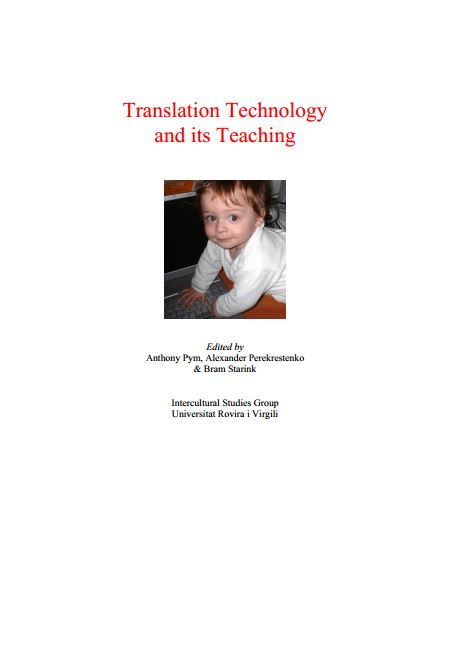
FREE e-Books
Download, Read and Enjoy!
Join Translation Journal
Click on the Subscribe button below to receive regular updates.
Translation Technology and its Teaching (with much mention of localization)
- Details
- Written by Pym, A., A. Perekrestenko, et al. (2006)

More people than ever are being trained to translate. However, the most dynamic sector of the labor market requires more than mere translation. The demand is increasingly for professional competence in a range of new technologies. Translators now need professional competence in the use of programs for translation memories, terminology management, sometimes content management, and increasingly the integration of various forms of automatic or semi-automatic translation. At the same time, the use of these technologies is being associated, rightly or wrongly, with the development of what is known as the “localization industry”. Faced with these new technologies, and with the new terms, many of the institutions that traditionally train translators are asking how, and to what extent, the existing curricula need be changed. The papers brought together in this volume seek to address this question in various ways. All have been drawn from various activities organized by the Intercultural Studies Group in recent years. The first papers seek to give a general background to the recent developments in translation technology. The paper on “Technology and Translation”, by José Ramón Biau Gil and Anthony Pym, was first written as a chapter of a university-level coursebook in translation, to be published in Italy. Its aim is not only to introduce the range of new tools available, but to encourage critical thought about the use of electronic technologies. The second paper in this introductory section, Bert Esselink’s “The Evolution of Localization”, was first published in 2003 and has been updated for this volume. It tells a similar story of technology, but this time from within the industry. Esselink traces the expansion of the localization industry from a narrow concern with software to a major way of thinking about the marketing of products across borders. Section two of this volume is drawn from the online conference on Localization and Translator Training, which took place on the ITIT list (Innovations in Translator Training) from 19 to 29 November 2003, with about 530 participants. The conference was based on number of position papers written by representatives of some of the main translator-training institutions. In most cases, those papers were responses to a brief questionnaire designed to explore the relations between the terms “translation” and “localization” with specific reference to training needs. The replies reproduced here are by Minako O’Hagan from Dublin City University in Ireland, Bob Clark, Jo Drugan, Tony Hartley and Daming Wu from the University of Leeds, UK, and Patrick Drouin from the University of Montreal. The online discussions that followed those papers can be seen on the ITIT list (http://groups.yahoo.com/group/itit/). What we present here are summaries of some of the main topics, written up by students in the Tarragona PhD program